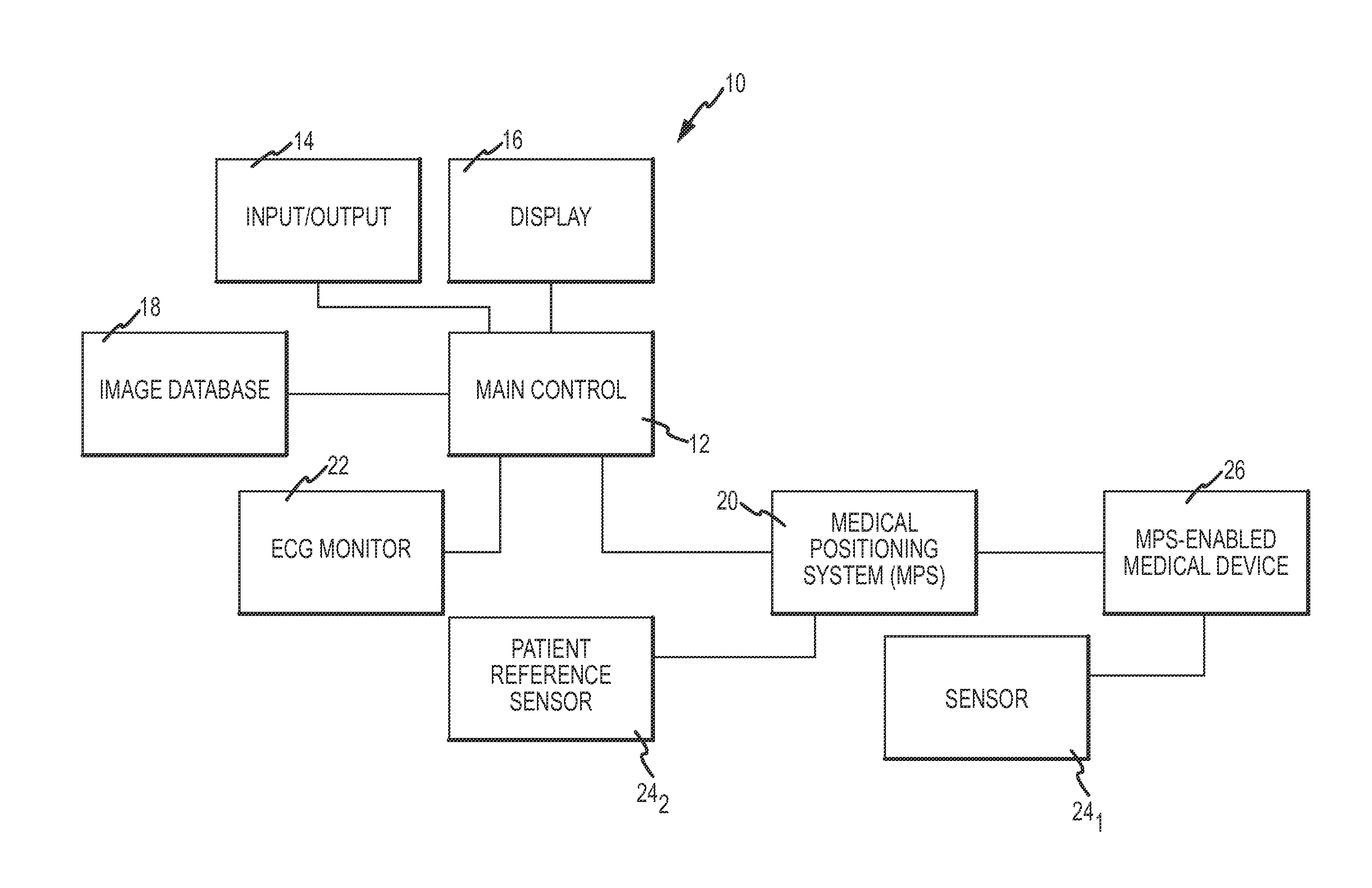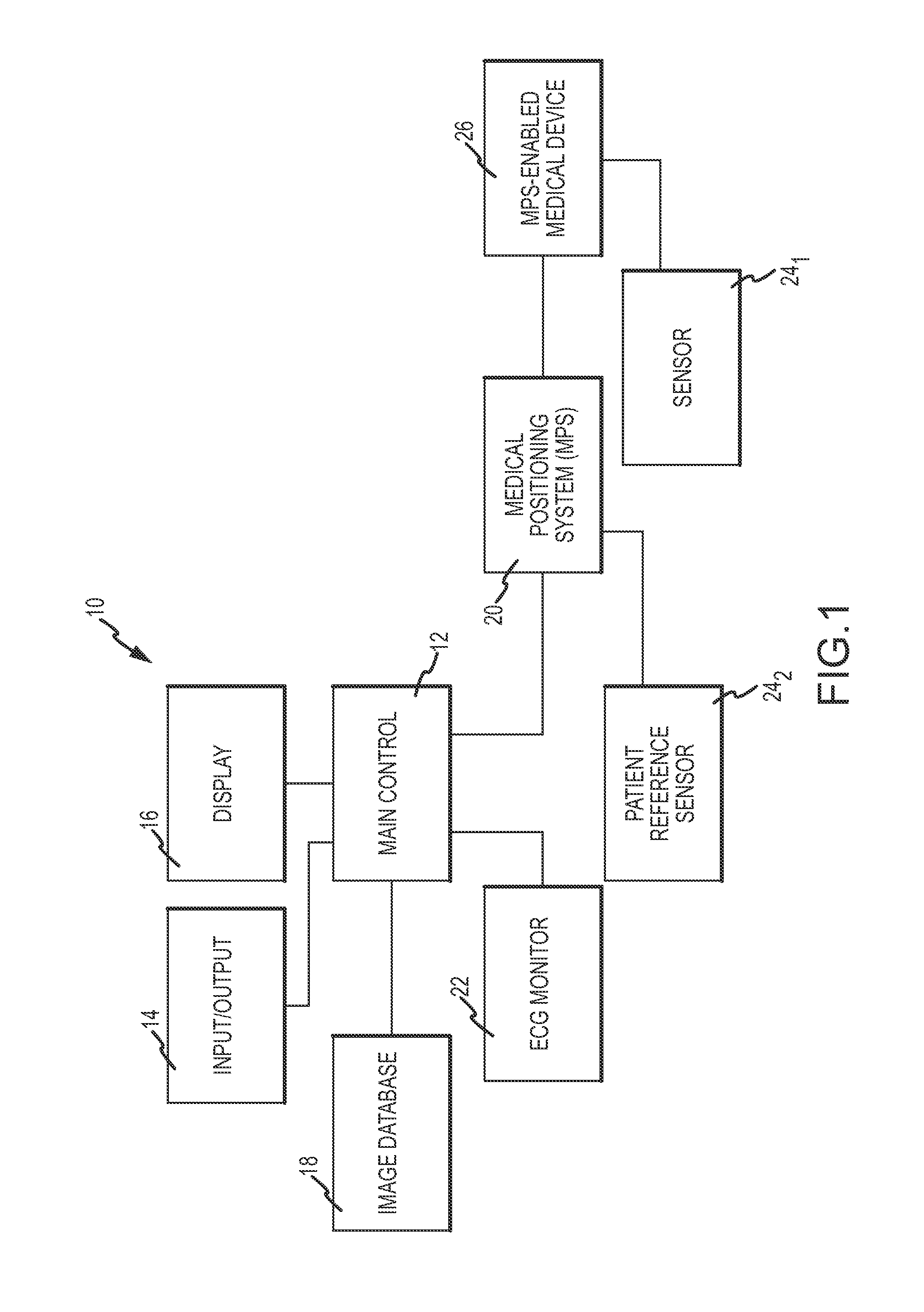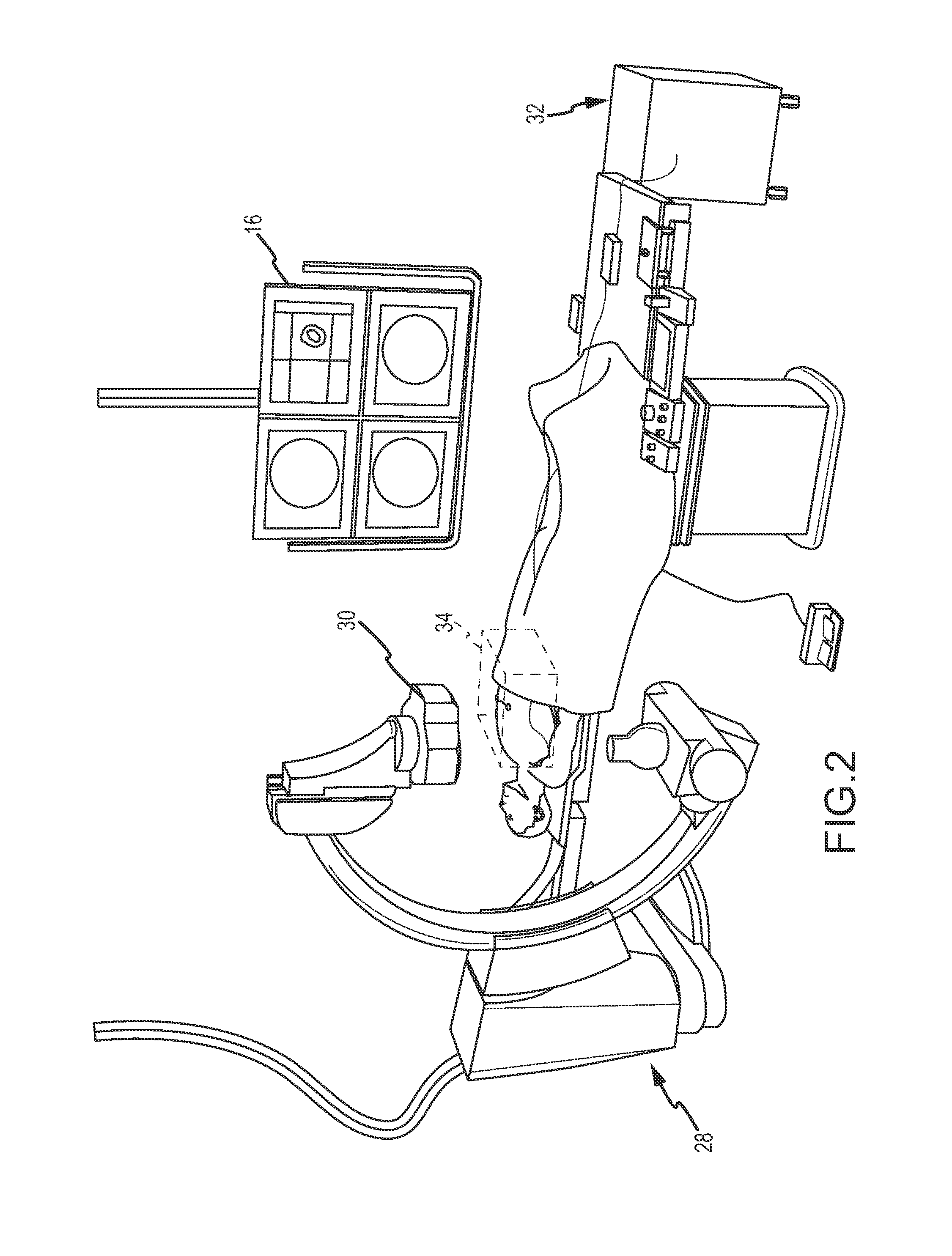Medical device guidewire with a position sensor
a technology of position sensor and medical device, applied in the field of medical device guidewire, can solve the problems of affecting the accuracy of the positioning of the guidewire, placing unwanted stress on the structure of the guidewire, etc., and achieve the effect of reducing stress and improving accuracy
- Summary
- Abstract
- Description
- Claims
- Application Information
AI Technical Summary
Benefits of technology
Problems solved by technology
Method used
Image
Examples
first embodiment
[0032]FIG. 3 is a diagrammatic view of a guidewire 36 that may be used as device 26 in system 10, with portions of a shroud broken away to more clearly show the interior components. Guidewire 36 has a distal end 38 and a proximal end 40. As used with reference to a guidewire, “distal” refers to an end that is advanced to the region of interest within a body while “proximal” refers to the opposite end that is disposed outside of the body and manipulated manually by a clinician or automatically through, for example, robotic controls.
[0033]Guidewire 36 includes a central corewire 42 and a generally thin-walled elongate shroud 48 defining an interior which contains corewire 42 and is configured in size and shape to receive a sensor 44. Sensor 44, and optionally a sheath 46 surrounding sensor 44, are disposed within the interior. In the illustrated embodiment, corewire 42 extends through sensor 44. A plug 50 is provided at the extreme distal end of guidewire 36 for structural support and...
embodiment 74
[0048]FIG. 9 is a cross-sectional view of a second guidewire embodiment 74. The distal end of guidewire 74 is substantially the same as distal end 38 of guidewire 36, except guidewire 74 lacks a shroud. Instead, a tubular spring 76 extends to and may be coupled to plug 50. Corewire 42, sensor 44, sheath 46 (if provided), and connection node 56 all may be potted together inside spring 76. Spring 76 may comprise radiopaque material, such as platinum, to increase fluoroscopic visibility.
embodiment 78
[0049]FIG. 10 is a cross-sectional view of a third guidewire embodiment 78. The interior of the distal end of guidewire 78 is substantially the same as distal end 38 of guidewire 36. However, guidewire 78 lacks a shroud and in lieu thereof its distal end is covered by a coating 80. Coating 80 may comprise a polymer layer extending proximally from plug 50, covering sensor 44, wiring 54, and spring 52. Coating 80 completely circumferentially surrounds sensor 44 and connection node 56, just like shroud 48 (FIG. 3) and spring 76 (FIG. 9). Coating 80 advantageously seals the distal end of guidewire 80, rendering it watertight, and may be hydrophilic or hydrophobic. Coating 80 also creates a smooth, continuous surface which is advantageous in some applications, such as delivering pace-makers and other implantable device leads.
[0050]FIG. 11 is a schematic and block diagram of one exemplary embodiment of MPS 20, designated as an MPS 108, as also seen by reference to U.S. Pat. No. 7,386,339,...
PUM
 Login to View More
Login to View More Abstract
Description
Claims
Application Information
 Login to View More
Login to View More - R&D
- Intellectual Property
- Life Sciences
- Materials
- Tech Scout
- Unparalleled Data Quality
- Higher Quality Content
- 60% Fewer Hallucinations
Browse by: Latest US Patents, China's latest patents, Technical Efficacy Thesaurus, Application Domain, Technology Topic, Popular Technical Reports.
© 2025 PatSnap. All rights reserved.Legal|Privacy policy|Modern Slavery Act Transparency Statement|Sitemap|About US| Contact US: help@patsnap.com



